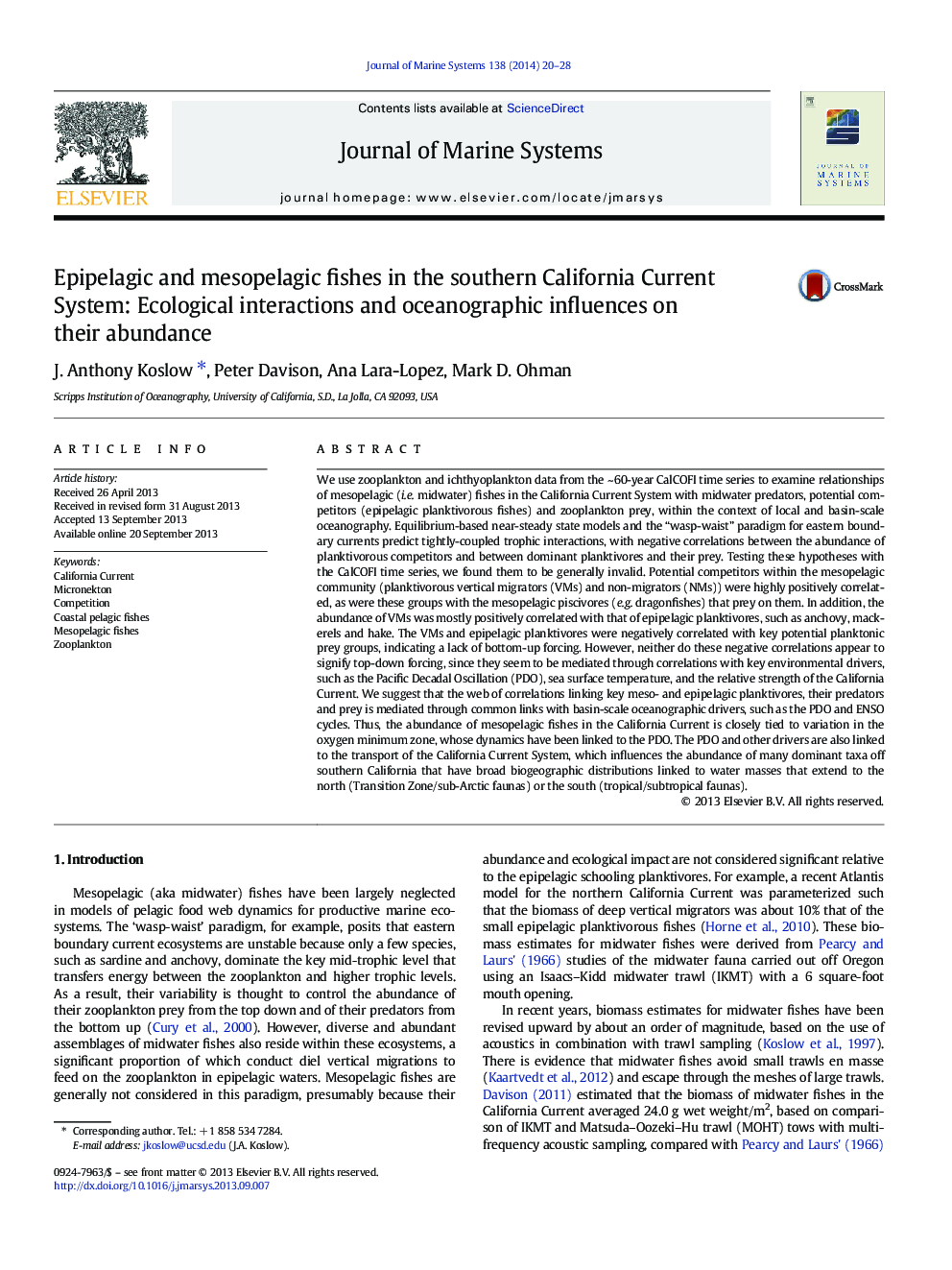| کد مقاله | کد نشریه | سال انتشار | مقاله انگلیسی | نسخه تمام متن |
|---|---|---|---|---|
| 4547995 | 1627291 | 2014 | 9 صفحه PDF | دانلود رایگان |

• Key meso- and epipelagic planktivores are positively correlated in the California Current System.
• These correlations are mediated through basin-scale processes (e.g. the PDO).
• The PDO influences both deepwater oxygen concentration and advection into the CCS.
• Advection of water masses (N vs S) is a primary driver of community composition in the CCS.
• Key assumptions of steady-state ecosystem models are not supported in the CCS.
We use zooplankton and ichthyoplankton data from the ~ 60-year CalCOFI time series to examine relationships of mesopelagic (i.e. midwater) fishes in the California Current System with midwater predators, potential competitors (epipelagic planktivorous fishes) and zooplankton prey, within the context of local and basin-scale oceanography. Equilibrium-based near-steady state models and the “wasp-waist” paradigm for eastern boundary currents predict tightly-coupled trophic interactions, with negative correlations between the abundance of planktivorous competitors and between dominant planktivores and their prey. Testing these hypotheses with the CalCOFI time series, we found them to be generally invalid. Potential competitors within the mesopelagic community (planktivorous vertical migrators (VMs) and non-migrators (NMs)) were highly positively correlated, as were these groups with the mesopelagic piscivores (e.g. dragonfishes) that prey on them. In addition, the abundance of VMs was mostly positively correlated with that of epipelagic planktivores, such as anchovy, mackerels and hake. The VMs and epipelagic planktivores were negatively correlated with key potential planktonic prey groups, indicating a lack of bottom-up forcing. However, neither do these negative correlations appear to signify top-down forcing, since they seem to be mediated through correlations with key environmental drivers, such as the Pacific Decadal Oscillation (PDO), sea surface temperature, and the relative strength of the California Current. We suggest that the web of correlations linking key meso- and epipelagic planktivores, their predators and prey is mediated through common links with basin-scale oceanographic drivers, such as the PDO and ENSO cycles. Thus, the abundance of mesopelagic fishes in the California Current is closely tied to variation in the oxygen minimum zone, whose dynamics have been linked to the PDO. The PDO and other drivers are also linked to the transport of the California Current System, which influences the abundance of many dominant taxa off southern California that have broad biogeographic distributions linked to water masses that extend to the north (Transition Zone/sub-Arctic faunas) or the south (tropical/subtropical faunas).
Journal: Journal of Marine Systems - Volume 138, October 2014, Pages 20–28